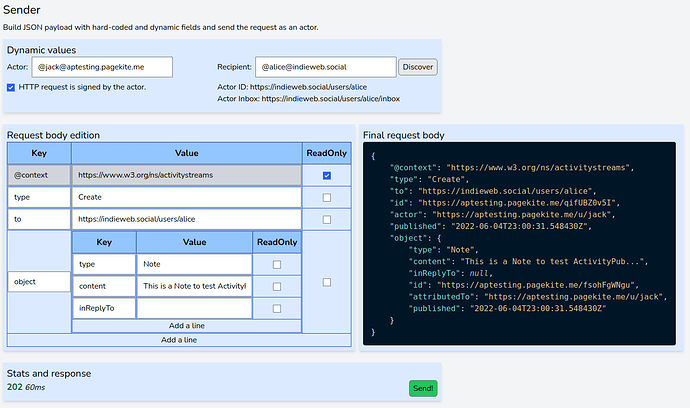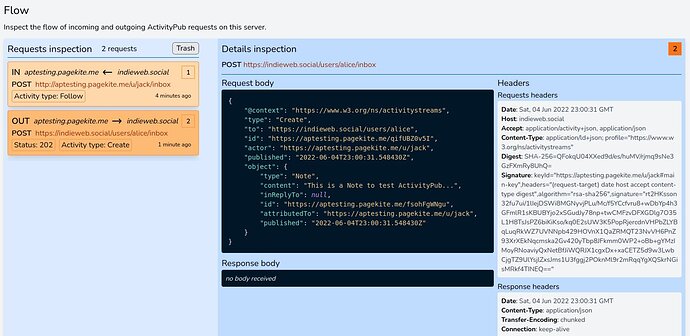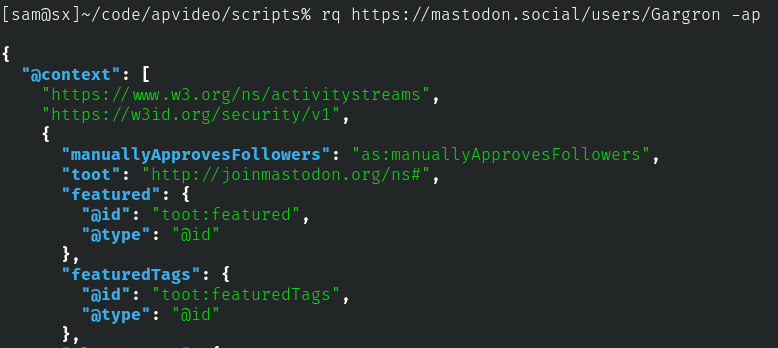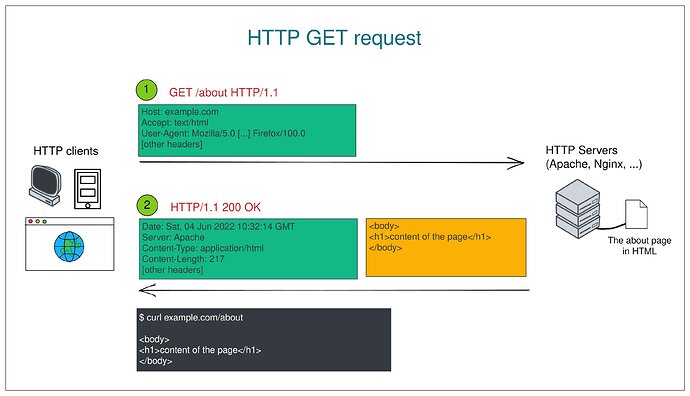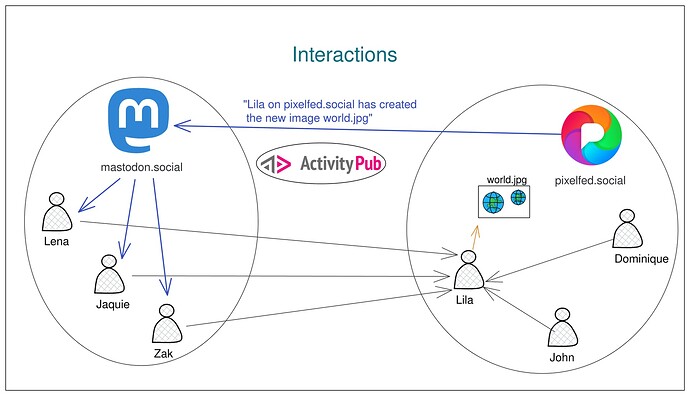Hello, sorry for taking so much time to give some news.
The video itself is not advanced, it will take at least 1.5 month to produce it. But I built 2 tools that will definitely help to teach ActivityPub concepts, explain by example and play with requests.
I’m pretty busy now (I have some exams soon) and the project is moving forward by irregular jumps. I struggled a few hours with HTTP signature, but that’s finally working (it’s apparently a pain point for a lot of people) !
The more I read forums or the fediverse with activitypub tag, the more I see dozens of people who are trying to learn and understand ActivityPub and that’s very encouraging for me. (And for a lot of things, I struggle with them too).
For reference, a few threads with the latest news on Mastodon and a few screenshots.
Here are the big advancements:
I’m developing APdebug, an interface to debug, inspect and write ActivityPub requests. It took me some effort to build, but it starts now to be usable and useful. I use pagekite to make the server publicly accessible (so that remote servers can send requests to APdebug). This is released under AGPLv3 and available here (still in beta, I hope to release a “production” version when this will be mature in a few months). Maybe I should create a separated post to introduce this properly when it will be more polished ?
The first page is Sender: the place to write custom requests (it discovers a remote actor with webfinger and http signature is handled.
The second page is Flow which displays the flow in “real time” (polling to refresh every 2s) of incoming and outgoing requests on this server.
Another idea about this project would be to host an instance and open registrations to make it very fast and easy to start playing with requests and using features of APdebug (and maybe even “sharing” requests the same way we can do it with code snippets on certain services). I talked shortly about this on Mastodon, and I would like to have your feedback on this idea !
I developed a very small CLI (called rq now) that just combines Curl, Jq and Bat to be able to do HTTP requests with nice JSON colorized output in the terminal (works with HTML too).
I’m making schemas on Excalidraw to explain network structure and a few concepts.
One of them is about HTTP (another similar one is in preparation for POST request):
Another schema about the high level working of federation. This is in complement of my voice, so this will be displayed in parts and a bit clearer to understand what is what.
Any feedbacks or errors on these schemas ? (Btw, making federation schemas are pretty hard).
That’s it for the work and thinking achieved for the moment. Now that the tools and the code are ready, I can start to design and film the video…
